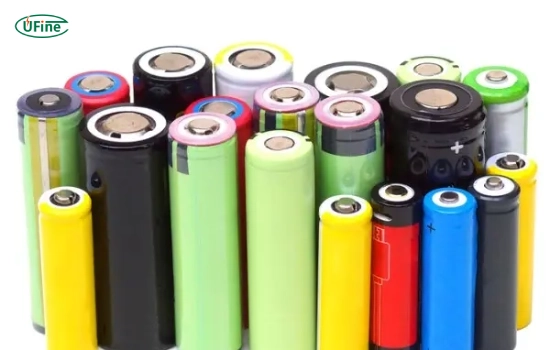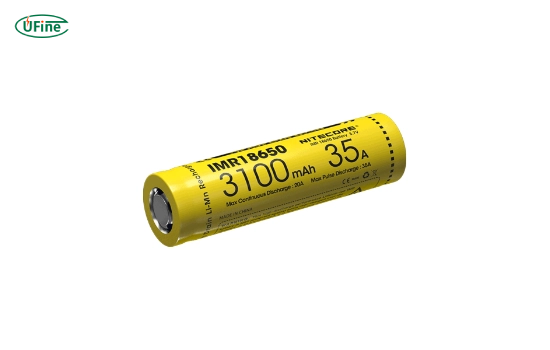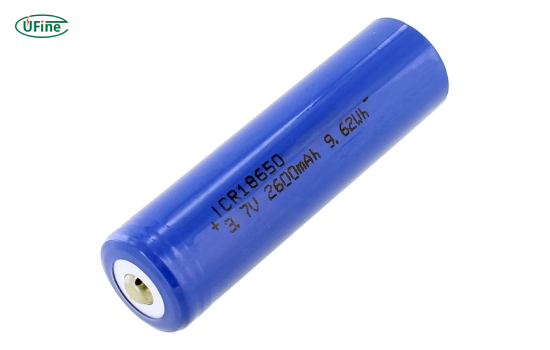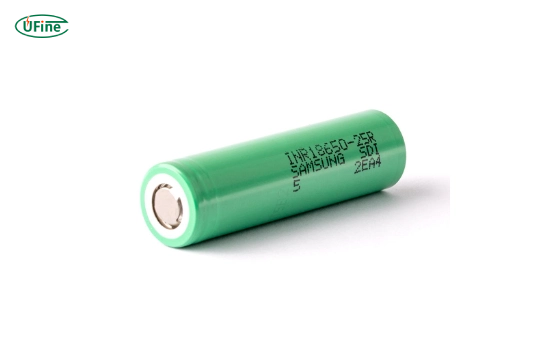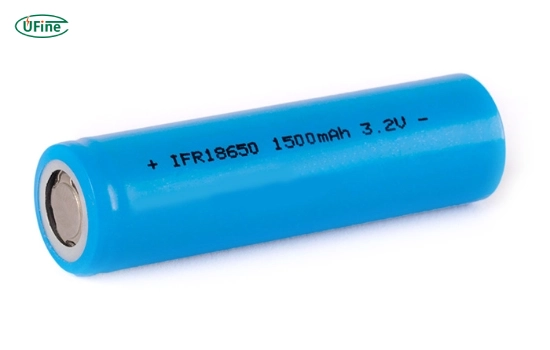In 18650 batteries, discerning the differences among IMR, ICR, INR, and IFR types is fundamental for tailored and efficient battery usage. These distinct classifications denote varying chemical compositions and performance characteristics, pivotal for selecting the ideal battery type based on specific device requirements. This article delves into an in-depth analysis of IMR, ICR, INR, and IFR 18650 batteries, highlighting their unique attributes and applications.
Part 1. IMR 18650 Battery
I: Lithium (Li)
M: Manganese (Mn)
R: Round cell (R)
Chemical Composition
IMR 18650 batteries, denoted by their acronym “Lithium Manganese Oxide Rechargeable,” utilize lithium manganese oxide (LiMn2O4) as the cathode material. This chemical configuration imparts distinctive properties to these batteries compared to their counterparts, influencing their performance and safety features.
Advantages
- Enhanced Safety: Using lithium manganese oxide contributes to safer chemistry, reducing the risk of thermal runaway and improving stability during charge and discharge cycles.
- Lower Internal Resistance: IMR batteries exhibit lower internal resistance, enabling higher discharge rates. This characteristic makes them well-suited for high-drain devices requiring rapid bursts of power, such as vaping devices and high-powered flashlights.
Disadvantages
- Energy Density Concerns: Compared to other 18650 variants, IMR batteries might have a slightly lower energy density. This aspect can reduce overall battery life or capacity, making them less ideal for prolonged, low-power applications.
Applications
IMR 18650 batteries have extensive applications in devices that demand immediate energy output.
- Vaping Mods: Due to their ability to discharge power rapidly, IMR cells are popular in the vaping community, providing quick bursts of energy for vaporization.
- Portable Lighting Systems: High-performance flashlights and portable lighting systems benefit from IMR batteries for their ability to deliver immediate high power when needed.
- Power Tools: Devices like power drills and saws that require quick and substantial power bursts find IMR batteries suitable for their high-drain needs.
Part 2. ICR 18650 Battery
I: Lithium (Li)
C: Cobalt (Co)
R: Round cell (R)
Chemical Composition
ICR 18650 batteries, denoted by “Lithium Cobalt Oxide Rechargeable,” utilize lithium cobalt oxide (LiCoO2) as their cathode material. This chemical configuration distinguishes them from other 18650 variants and significantly influences their performance and safety attributes.
Advantages
- High Energy Density: ICR batteries boast a remarkable energy density, allowing them to store substantial amounts of energy compared to several other 18650 counterparts.
Disadvantages
- Safety Concerns: Lithium cobalt oxide chemistry presents safety risks, especially during high-drain scenarios. ICR batteries are more susceptible to overheating and instability, making safety management critical.
- Lower Discharge Rates: These batteries exhibit lower discharge rates than specific variants like IMR, limiting their suitability for high-drain applications requiring rapid power delivery.
Applications
ICR 18650 batteries find application in devices emphasizing high capacity over immediate high power output.
- Consumer Electronics: Devices like laptops, digital cameras, and various portable electronics benefit from ICR batteries due to their high capacity, providing stable power output for longer durations.
- Low-Drain Devices: Gadgets requiring consistent but not immediate power, such as specific medical devices or low-power flashlights, utilize ICR batteries for sustained energy provision.
Part 3. INR 18650 Battery
I: Lithium (Li)
N: Nickel (Ni)
R: Round cell (R)
Chemical Composition
INR 18650 batteries, abbreviated as “Lithium Nickel Manganese Cobalt Oxide Rechargeable,” incorporate a blend of nickel, manganese, and cobalt in their cathode material. This chemical composition significantly influences their performance attributes.
Advantages
- Balanced Performance: INR batteries balance capacity and discharge rates, offering moderate capacity alongside decent power output.
- Improved Stability: Compared to specific variants like ICR cells, INR batteries exhibit enhanced stability and a lower risk of overheating during high-drain scenarios.
Disadvantages
- Moderate Energy Density: INR batteries may possess a slightly lower energy density than specific counterparts, affecting their overall capacity and usage duration.
- Moderate Capacity: Compared to high-capacity variants like ICR batteries, INR cells tend to have a more moderate capacity, affecting their suitability for high-capacity applications.
Applications
INR 18650 batteries cater to devices requiring a balance between capacity and power output.
- Portable Electronics: Laptops, power banks, and select electronic tools benefit from INR batteries for their balanced performance in delivering stable power over moderate periods.
- Moderate-Drain Devices: Gadgets needing sustained but not excessively high power, such as mid-range flashlights or moderate-power appliances, utilize INR batteries for their equilibrium between capacity and power output.
Part 4. IFR 18650 Battery
I: Lithium (Li)
F: Iron (Fe)
R: Round cell (R)
Chemical Composition
IFR 18650 batteries, represented by the acronym “Lithium Iron Phosphate Rechargeable,” utilize iron phosphate (LiFePO4) as their cathode material. This distinct chemical composition distinguishes them from other 18650 variants and greatly influences their performance characteristics.
Advantages
- Enhanced Safety: IFR batteries are renowned for their superior safety profile. Lithium iron phosphate significantly reduces the risk of thermal runaway and instability during charge and discharge cycles.
- Longevity: These batteries boast a longer lifespan than other 18650 variants, contributing to their popularity in applications prioritizing durability and longevity.
Disadvantages
- Lower Energy Density: IFR batteries may have a lower energy density than some counterparts, impacting their overall capacity and the amount of energy they can store.
- Moderate Discharge Rates: They exhibit reasonable discharge rates compared to high-discharge batteries like IMR, limiting their suitability for applications requiring rapid power delivery.
Applications
IFR 18650 batteries have extensive applications in devices where safety and longevity are paramount.
- Solar Power Storage: Their enhanced safety and prolonged lifespan make IFR batteries ideal for solar power storage systems requiring reliability and longevity.
- Electric Vehicles: Electric cars and bikes benefit from IFR batteries due to their safety and durability, ensuring prolonged battery life in these high-usage applications.
Part 5. Differences between IMR, ICR, INR, and IFR 18650 batteries
Similarities
- All Lithium-ion: IMR, ICR, INR, and IFR batteries belong to the lithium-ion family, utilizing lithium-based chemistry in their construction.
- Rechargeable: They are all rechargeable batteries, capable of being recharged multiple times before needing replacement.
Differences
1. Chemical Composition
- IMR: Lithium Manganese Oxide (LiMn2O4).
- ICR: Lithium Cobalt Oxide (LiCoO2).
- INR: Lithium Nickel Manganese Cobalt Oxide.
- IFR: Lithium Iron Phosphate (LiFePO4).
2. Performance Characteristics
- IMR: Known for lower internal resistance, enabling higher discharge rates suitable for high-drain devices.
- ICR: Offers high capacity but raises safety concerns due to potential overheating during high-drain scenarios.
- INR: Strikes a balance between capacity and discharge rates, suitable for moderate-drain devices.
- IFR: Prioritizes safety, stability, and longevity over high capacity or discharge rates.
3. Applications
- IMR: High-drain devices like vaping mods, power tools, and high-powered flashlights.
- ICR: Low-drain devices like laptops, digital cameras, or low-power appliances.
- INR: Moderate-drain devices like laptops, power banks, or moderate-power tools.
- IFR: Solar power storage systems, electric vehicles, or applications requiring safety and longevity.
4. Safety and Longevity
- IMR and IFR: Generally considered safer than ICR due to their chemistry, with IFR specifically prioritizing safety and longevity.
- INR: Offers a moderate balance between safety and performance.
Recommended Reads
Part 6. FAQs
-
Which 18650 battery type is best for high-drain devices?
IMR (Lithium Manganese) and high-quality INR (Lithium Nickel Manganese Cobalt Oxide) batteries are generally preferred for high-drain devices due to their ability to discharge high currents without significant voltage drops. -
What distinguishes ICR batteries from other types?
ICR (Lithium Cobalt Oxide) batteries typically offer higher energy density. Still, they are less suitable for high-drain applications than IMR or INR batteries. They provide more capacity but have lower current discharge capabilities. -
What voltage is IMR 18650?
IMR 18650 batteries usually have a nominal voltage of 3.7 volts and a fully charged voltage of around 4.2 volts. -
What size is the ICR 18650 battery?
ICR 18650 batteries typically have a standardized size of 18mm in diameter and 65mm in length, similar to other 18650 batteries. -
What applications are suitable for INR batteries?
INR (Lithium Nickel Manganese Cobalt Oxide) batteries are well-suited for various applications such as power tools, vaping devices, high-performance flashlights, and other high-drain devices that require both capacity and continuous high-current discharges.
Related Tags:
More Articles
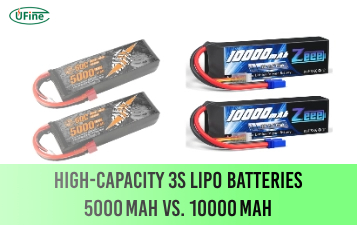
High‑Capacity 3S LiPo Batteries: 5000 mAh vs. 10000 mAh
Compare 3S LiPo 5000mAh vs 10000mAh batteries by weight, power, and use. Find the best fit for your drone, RC car, or boat setup.
Top 5 Applications for Small 3S LiPo Batteries
Small 3S LiPo batteries power drones, RC gear, wearables, and robotics with high energy and low weight. Making them ideal for compact electronics projects.
Building and Charging Your Own 3S LiPo Pack: A Step‑by‑Step Guide
Learn how to build, balance, and charge a 3S LiPo battery pack safely at home with this complete DIY guide for hobbyists and beginners.
How to Choose the Right LiPo Battery Plug Type?
Discover the best LiPo battery plug types, how to choose them, and expert tips for safe usage, soldering, and maintenance.
Choosing the Right Connector for Your 3S LiPo Battery
Choosing the right 3S LiPo connector depends on current, space, and use. Learn the pros and cons of XT60, JST, EC3, and more.
